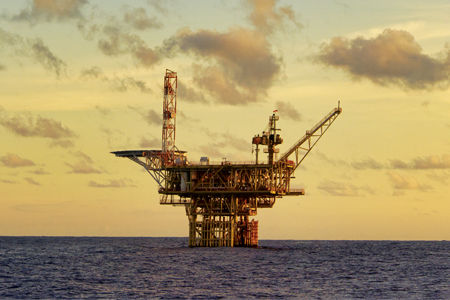 With oil prices recovering from the 2014 crash and investments in alternative renewable energy sources continuing to gain momentum, oil & gas companies need to innovate to stay competitive and keep the fuel flowing. The processes of locating, estimating and producing oil and gas are now driven by the real-time collection and analysis of data from the oilfield. Reliable and seamless communication on-site is absolutely critical to achieving the efficiencies organisations need to reap maximum profit.
With oil prices recovering from the 2014 crash and investments in alternative renewable energy sources continuing to gain momentum, oil & gas companies need to innovate to stay competitive and keep the fuel flowing. The processes of locating, estimating and producing oil and gas are now driven by the real-time collection and analysis of data from the oilfield. Reliable and seamless communication on-site is absolutely critical to achieving the efficiencies organisations need to reap maximum profit.
A 2017 World Economic Forum whitepaper reported that digital transformation in the oil & gas industry could unlock approximately $1.6 trillion of value for the industry, its customers and wider society. Moreover, the digitisation could create benefits worth approximately $640 billion. This includes approximately $170bn of savings for customers, roughly $10bn of productivity improvements, $30bn from reducing water usage and $430bn from lowering emissions.
Drilling into technology for efficiencies
Globally available and reliable connectivity, robotics and the Internet of Things (IoT) are making it possible for energy companies to extract oil and gas from locations that until only recently were deemed inhospitable.
Although robust and cost-effective technologies are always the first preference for operators, creating robustness is not always easy. Energy companies will continue to struggle to derive the maximum value from IoT without access to radically improved reliable high-speed connectivity, according to independent research commissioned by Inmarsat.
Exchanging critical data when required
From the exploration phase to extraction or production, rigs or mining sites need to ensure a constant link with headquarters. In addition, access to operation-critical applications such as email and videoconference as well as the ability to reliably be connected at all times is critical.
Any solution deployed needs to seamlessly connect all hardware platforms and systems across various fields of operation, integrating exploration, drilling and production facilities, to deliver valuable data and video streams to a central location, allowing the operators to make better and quicker decisions.
Therefore, integrated solutions are becoming more popular, enabling organisations to combine controlled welfare and secure corporate links all in one solution. Such solutions can provide 360-degree support for corporate applications, equipped with 24/7 budget control tools and around-the-clock customer support. They can also provide advanced online reporting on network usage and help control allocations of staff credits.
In parallel, such solutions can provide personnel with high-quality on-demand data access via scratch cards. Scratch cards can be purchased individually as data bundles or provided by companies as a part of their social package, making access to messaging apps and social media easier and more affordable.

Boosting operational efficiency with remote maintenance
A significant cost to businesses extracting oil and gas is maintenance. Sending large numbers of staff to perform basic manual tasks can be both costly and inefficient. Wireless network standardisation efforts over the last decade have enabled remote monitoring and maintenance strategies that can help avoid costly shutdowns that may seem necessary in lower-priced markets.
The more efficient alternative is to employ remote monitoring technology that takes data readings at set intervals and transfers this data back to head offices. This approach significantly improves data visibility, allowing staff to constantly monitor machinery and other vital data and take action when necessary.
This is particularly important on oil & gas rigs, where a fault with mission-critical machinery could halt production and cost a business millions of dollars. This approach also enables predictive maintenance. Rather than send staff out to remote locations every three months to inspect machinery, a company can optimise maintenance schedules and improve the efficiency of operations.
Optimising connectivity with the right technology
One of the challenges faced by the oil & gas industry is related to the fact that contractors and assets generally move from one location to another on a daily or weekly basis. This can be more challenging when faced with extreme temperatures and frequent sandstorms.
Satellite technology is capable of meeting the demand for effective, secure communications and overcoming these challenges. Providing uninterrupted service without the involvement of on-site technicians after the move of a rig or drilling platform, for example, is only achievable through the adoption of high-capacity platforms, which can auto-align and mitigate these challenges.
Providing telemedicine and e-health services
Reliable satellite links also allow applications such as telemedicine to deliver clinical health care in emergency situations, or e-training on safety and best practices for staff.
The facilitation of video conference with medical diagnosis equipment enables clinicians to provide remote consultations using state-of-the-art video communications, allowing accurate diagnosis.
Retaining and attracting the right talent
High-speed connectivity can help retain the right people and attract the best talent, and is increasingly becoming a deciding factor in whether young and talented individuals work in remote locations. With innovations in technology propelling a networked economy on land, it is becoming easier to ensure connectivity. Yet businesses are quite reluctant to provide open access to staff, on account of fear of increased and high running costs, large file downloads and overall work disruption.
Companies today acknowledge that connectivity is linked directly to staff welfare and business productivity. The challenge is to balance the two while maintaining budgetary control at all times.
Nabil Ben Soussia is MD of IEC Telecom Middle East














Add Comment